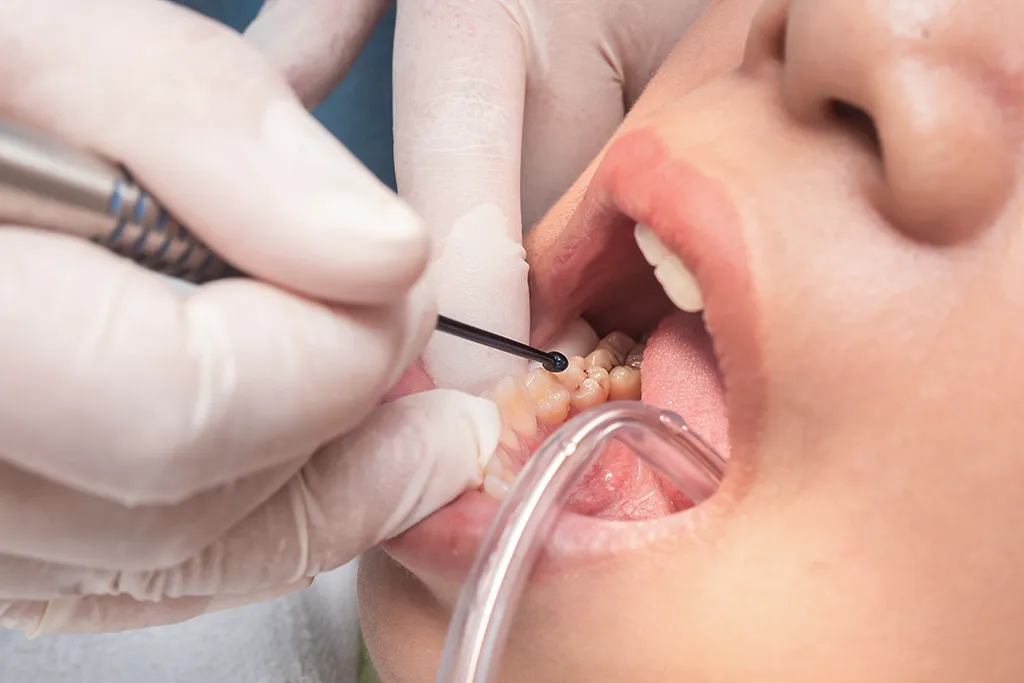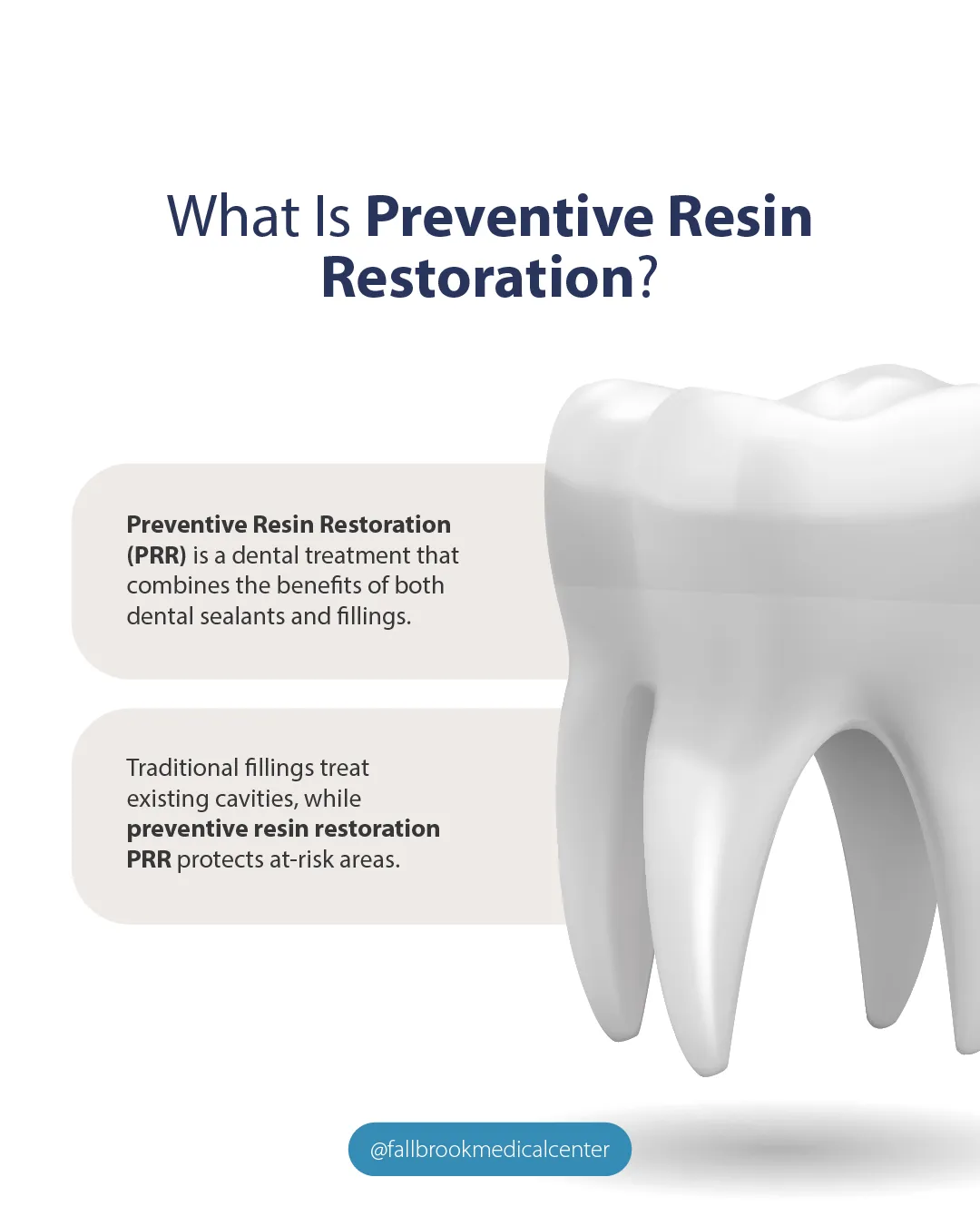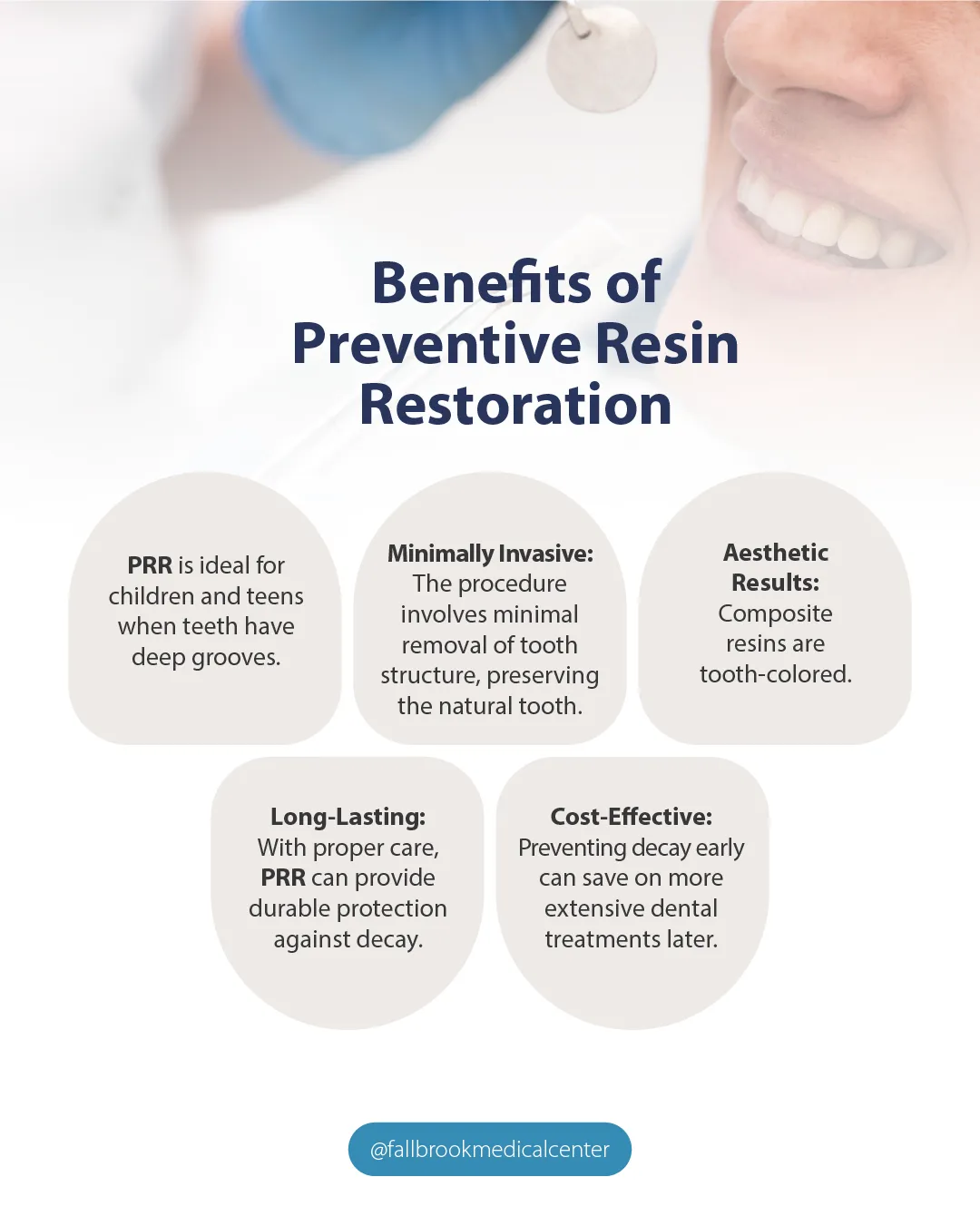Preventive Resin Restoration: Cavity Prevention

Preventive Resin Restoration (PRR) is an advanced dental technique designed to protect teeth from decay. Especially in areas that are difficult to clean. It works when teeth have deep grooves called pits and fissures that are highly susceptible to decay.
What Is Preventive Resin Restoration?
Preventive Resin Restoration (PRR) is a dental treatment that combines the benefits of both dental sealants and fillings. Traditional fillings treat existing cavities, while preventive resin restoration prr protects at-risk areas.
Dentists apply preventive resin restoration PRR to areas at risk of developing cavities. Such as the chewing surface of molars and premolars. These chewing surfaces often have deep grooves called pits and fissures that trap food and bacteria.
Helps prevent decay: PRR uses composite resins to seal deep grooves and reduce bacteria and food buildup. This resin not only seals the grooves but also restores the tooth’s structure, preventing further decay. Using composite resins helps the restoration match the natural tooth color.

Why Is PRR Important?
People whose teeth have deep grooves are susceptible to decay because they are hard to clean. Traditional brushing may not effectively reach these areas, allowing plaque and bacteria to accumulate. Over time, this can lead to cavities. PRR addresses this issue by sealing these vulnerable areas, thereby preventing decay and maintaining the tooth’s integrity.
Additionally, PRR is a minimally invasive procedure that preserves more of the natural tooth structure compared to traditional fillings. This method not only helps the tooth last longer but also lowers the need for more dental work later.
The PRR Procedure: What to Expect
The PRR procedure is straightforward and typically completed in a single dental visit:
- Examination: The dentist examines the teeth to identify areas at risk of decay.
- Cleaning: The clinician cleans the chewing surface to remove plaque or debris.
- Decay Removal: The dentist gently removes early signs of decay from the grooves.
- Resin Application: The dentist applies composite resins to the cleaned area.
- Curing: The clinician hardens the resin with a special light to ensure a durable bond.
- Polishing: The treated area is polished to match the natural tooth surface.
This procedure is quick, painless, and does not typically require anesthesia.
Benefits of Preventive Resin Restoration
- Preventive resin restoration PRR is ideal for children and teens when teeth have deep grooves.
- Minimally Invasive: The procedure involves minimal removal of tooth structure, preserving the natural tooth.
- Aesthetic Results: Composite resins are tooth-colored, providing a natural appearance.
- Long-Lasting: With proper care, PRR can provide durable protection against decay.
- Cost-Effective: Preventing decay early can save on more extensive dental treatments later.

Is PRR Suitable for Everyone?
PRR helps people, especially children and teens, with teeth that have deep grooves. These individuals are at risk of getting cavities. Adults with similar dental anatomy can also benefit from this preventive measure. Your dentist can assess your oral health and determine if PRR is appropriate for you.
Conclusion
Preventive Resin Restoration is a simple dental procedure. It helps protect teeth from decay.
This is especially useful in hard-to-clean areas. By sealing deep grooves with composite resins, PRR helps prevent cavities. It also keeps the natural tooth structure, giving long-lasting and attractive results. Consult with your dentist to see if PRR is the right choice for maintaining your oral health.
Frequently Asked Questions about Preventive Resin Restoration (PRR)
1. What is a Preventive Resin Restoration (PRR)?
PRR is a conservative dental treatment that combines the advantages of sealants and composite resin restorations. Dentists apply preventive resin restoration prr to teeth with incipient enamel caries, sealing deep fissures to prevent decay.
2. How does PRR differ from a dental sealant?
Clinicians place sealants on healthy teeth to stop cavities; they use preventive resin restoration prr for early enamel caries. It combines the benefits of a sealant with a small restoration.
3. Is the PRR procedure painful?
PRR is generally a painless procedure. Because dentists remove only a small amount of enamel, they usually do not use anesthesia.
4. How long does a PRR last?
With proper care, PRR restorations can last for several years, providing long-term protection against cavities.
5. Is PRR suitable for everyone?
Dentists recommend preventive resin restoration (PRR) for patients, particularly children and adolescents, when teeth have deep grooves. These teeth are more likely to get cavities. A dentist can determine if PRR is appropriate based on individual dental health.
References
- Dental Claim Support. (2020). Examining CDT Code D1352: What is the difference between a Sealant vs Preventive Resin Restoration vs Filling?
- Dental Excellence Green Bay. What’s the Difference Between Dental Fillings, PRR & Sealants?
- Lansdowne Pediatric Dentistry. Preventive Resin Restoration For Children.
- SmartPractice. (2012). Preventive Resin Restorations.
- H&L Dentistry. Preventive Resin Restorations.
- Feigal, R. J. (1998). Preventive resin restorations: A review of effectiveness and clinical changes for improvement. Pediatric Dentistry, 20(2), 81-87.
- H&L Dentistry. Preventive Resin Restorations.
- SmartPractice. (2012). Preventive Resin Restorations.

